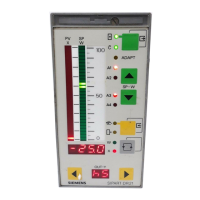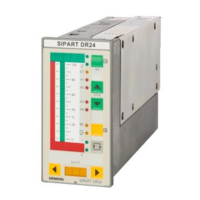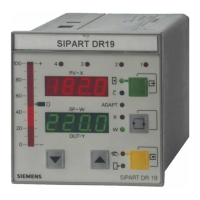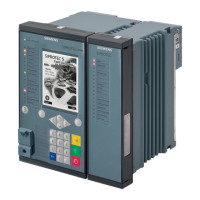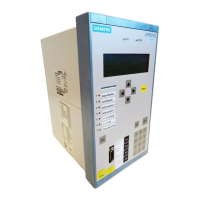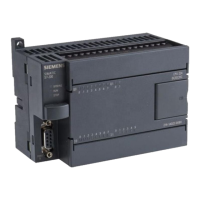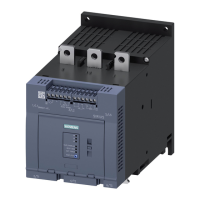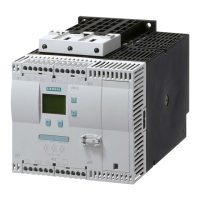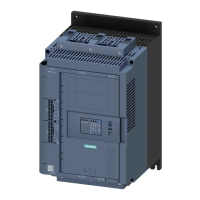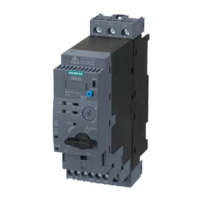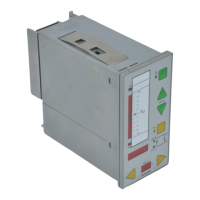
Do you have a question about the Siemens SIPART DR20 and is the answer not in the manual?
| Power Supply | 24 V DC |
|---|---|
| Operating Temperature | -40 to +85 °C |
| Protection Class | IP66 |
| Output Signals | 4-20 mA, HART |
| Display | LCD |
| Ambient Temperature | -40 to +85 °C |
| Weight | Approx. 1.2 kg |
| Communication Protocols | HART |
| Input Signals | 4-20 mA |
Defines the basic principles and components of an automatic control system, including variables and block diagrams.
Discusses common sensors and transmitters used with controllers in process engineering, including signal outputs.
Explains the role and types of actuators influencing the controlled system in process engineering.
Details different control actions like P, PD, PI, and PID, and illustrates their step responses.
Outlines the wide range of applications for the SIPART DR20 in process and mechanical engineering.
Describes the front panel layout, controls, and various display elements of the SIPART DR20 controller.
Details the modular hardware design, including standard controller components and optional modules.
Explains the components and functionality of the front module, including display and control elements.
Describes the basic circuit board's functions, including power supply and signal matching.
Lists and describes optional modules for analog inputs, alarm outputs, and serial interfaces.
Explains the controller's software operation, configuring switches, and program functions.
Details analog-to-digital conversion, signal assignment, and processing of input signals.
Covers functions like setpoint handling, tracking, ramp, deviation formation, and alarm monitoring.
Explains filtering, display, response threshold, D element, P/PI control, and output signal limitation.
Describes operating modes, switchover, manual variables, and special functions of alarm output modules.
Defines how the controller restarts after power failure or detected faults.
Explains the meaning of LED indicators on the front panel for various functions and states.
Details the serial interface and bus driver for communication with higher-level systems.
Covers selection of mounting location and panel mounting procedures for the controller.
Explains electrical installation requirements, protective earth, power supply, and signal line connections.
Details the wiring and functionality of optional analog input modules like 6DR2800-8J.
Describes the connection of resistance transmitters and current inputs using module 6DR2800-8R.
Explains the wiring for Pt 100 resistance thermometers using module 6DR2800-8P.
Details the wiring for thermocouples and mV signals using module 6DR2800-8T.
Describes alarm modules with relays (6DR2801-8A) and digital outputs (6DR2801-8B).
Explains wiring for the serial interface module and SIPART bus driver.
Provides wiring diagrams for SES bus driver and remote system connections.
Illustrates the wiring principles for connecting SES bus drivers to the SIPART bus.
Shows wiring principles for the bus driver and its interface to remote systems.
Explains how to operate the controller in process mode using the front panel controls and displays.
Guides on how to adjust controller parameters online through the front panel interface.
Details the procedure for setting up controller configurations using switches and front panel controls.
Describes how to perform a lamp test of all LEDs on the controller's front panel.
Explains how to check the software release version of the SIPART DR20 controller.
Provides additional notes on signalling, linearizer settings, and mains failure indicators.
Lists standard measuring ranges and marshalling settings for thermocouple types.
Guides on setting the controller's direction of action and matching the position display.
Explains how to match the controller's action to the system and final control element.
Describes how to set the position display direction based on the system's action.
Details matching parameters for two-position and three-position step controllers to final control elements.
Discusses matching parameters T+ and T- for two-position controllers to unit periods.
Explains setting parameters Ty, te, and ta for three-position step controllers with internal feedback.
Outlines optimizing position control loops with parameters te and ta for external feedback.
Provides methods for adjusting control parameters and optimizing system performance.
Offers guidelines for setting parameters like Kp, Tn, and Tv for stable control.
Explains how to set control parameters based on system transient functions.
Discusses suppressing interference and using filters and response thresholds.
Shows setpoint response for a fixed setpoint controller without ramp or x-tracking.
Demonstrates setpoint response with ramp, x-tracking, and Si input configuration.
Illustrates two-setpoint operation in a synchronization controller without local/remote switchover.
Shows two-setpoint mode operation based on specific configuration settings.
Explains two-setpoint mode where local setpoint tracks the effective setpoint.
Details three-setpoint mode operation using remote, safety, and local setpoints.
Describes four-setpoint mode with local/remote switchover and CB signal input.
Explains how to configure the controller, focusing on necessary switch settings.
Refers to notes on page 92 for parameter adjustment procedures.
Discusses PI, PID, P, or PD response and EPT connection requirements.
Provides an index of planning examples with corresponding page numbers.
Details a fixed setpoint control circuit using a four-wire transmitter.
Shows a fixed setpoint control circuit using a two-wire transmitter.
Describes a fixed setpoint control using a Pt 100 thermometer in a three-wire circuit.
Details a fixed setpoint control using a Pt 100 thermometer in a four-wire circuit.
Explains a fixed setpoint control using a Pt 100 thermometer in a two-wire circuit.
Shows a fixed setpoint control using a thermocouple with internal cold junction.
Details a fixed setpoint control using a thermocouple with external cold junction.
Illustrates a fixed setpoint control with remote setpoint adjustment via a resistance transmitter.
Describes ratio control using a ratio station and a slave controller with four-wire transmitters.
Explains cascade control where both controllers use four-wire transmitters.
Details a fixed setpoint control with position feedback using EPT and four-wire transmitter.
Shows a fixed setpoint control with thermocouple input and EPT position feedback.
Describes a fixed setpoint control with Pt 100 input and resistance transmitter feedback.
Details a fixed setpoint control with thermocouple (external CJ) and EPT position feedback.
Explains two-component control with disturbance feed-forward and resistance transmitter feedback.
Describes cascade control using Pt 100 resistance thermometers for both master and slave.
Details ratio control with two-wire transmitters for process and command variables.
Shows P(D) fixed setpoint control using a thermocouple with two or three-position controller.
Provides the circuit diagram for controllers with K output configurations.
Provides the circuit diagram for controllers with S output configurations.
Offers a table for recording controller settings and tag numbers.
